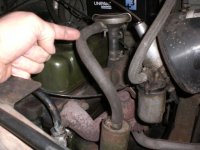Rut
Obi Wan
Offline
Nomad, you are absolutely correct! The more I dig into these things the more types I find. Some have diaphrams, some springs, and some are gravity. The orfice inside the PCV is not an indicator of the amount of flow on the gravity models, just make sure they are verticle. I hope I can find a generic PCV that meets the vacuum specs for a 1275 and get rid of the 'restrictor' I placed inline.
Thanks, Rut
Thanks, Rut

 Hi Guest!
Hi Guest!

 smilie in place of the real @
smilie in place of the real @
 Pretty Please - add it to our Events forum(s) and add to the calendar! >>
Pretty Please - add it to our Events forum(s) and add to the calendar! >> 

